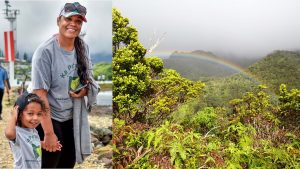Protecting the ‘āina for future generations
Posted on Jan 30, 2019 in Capitol Connection, FeaturedIn addition to controlling and directing growth, planned development allows us to accommodate other priorities as well. Our future requires that over time we, as a state, acquire and preserve more and more land, either as state land or in the hands of partners like the Trust for Public Lands and the Nature Conservancy. If we want green spaces, if we want to grow our own food, if we want places for recreation, if we want clean, fresh water, if we want the environment that has been so central to Hawai‘i’s life, we need to have special lands in public hands.
Take, for example, the new state Helemano Wilderness Recreational Area, 2,900 acres of former plantation and conservation land now dedicated to protecting our watershed and wildlife habitat and providing outdoor recreational opportunities for all. In October 2018, the Trust for Public Land and the state completed the purchase of four parcels of land from Dole Food Company using a creative combination of private, federal and state funding. In an earlier time, those lands might have been sacrificed to uncontrolled development. To a certain extent, this project was made possible because we have a plan for future development on O‘ahu, with growth directed to our urban core and along our fixed transit system. That lessens the pressure for development in other areas, including important agricultural and preservation lands.
It also allows us to initiate discussions with other private landowners, who have expressed an interest in developing lands in places like Kāneʻohe and Maunawili. We would prefer to negotiate acquisition agreements with them so that we can realize similar benefits to our natural resources and recreation. These places are worth saving for us and for future generations. That’s why we are requesting increased funding for land conservation by removing the $6.8-million cap on the 10 percent conveyance tax to the Legacy Land Conservation Program. And I’ve instructed DLNR to prioritize a strategic plan to help us better identify and coordinate the acquisition of such parcels of land going forward.
